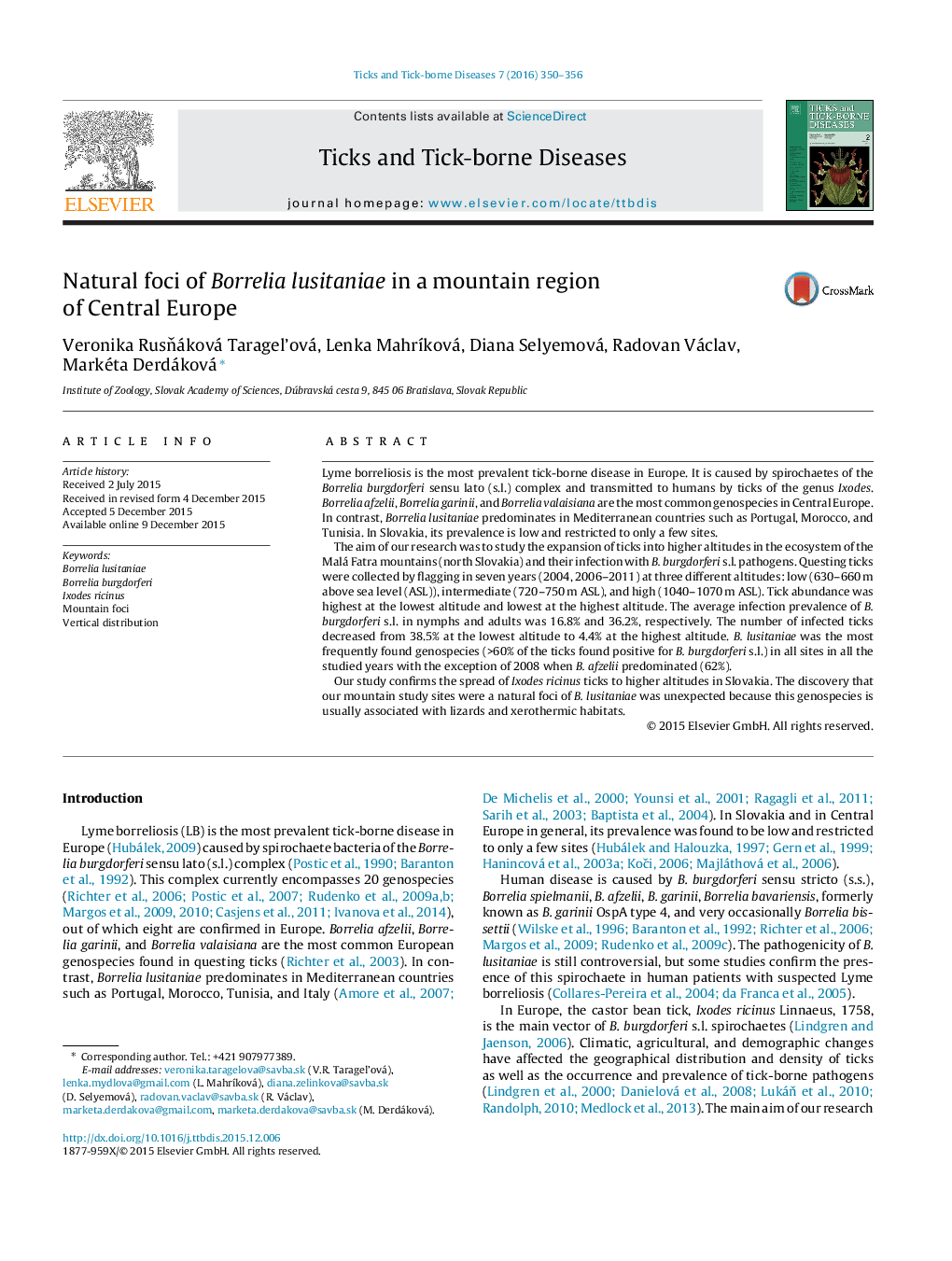| کد مقاله | کد نشریه | سال انتشار | مقاله انگلیسی | نسخه تمام متن |
|---|---|---|---|---|
| 5807128 | 1113105 | 2016 | 7 صفحه PDF | دانلود رایگان |

Lyme borreliosis is the most prevalent tick-borne disease in Europe. It is caused by spirochaetes of the Borrelia burgdorferi sensu lato (s.l.) complex and transmitted to humans by ticks of the genus Ixodes. Borrelia afzelii, Borrelia garinii, and Borrelia valaisiana are the most common genospecies in Central Europe. In contrast, Borrelia lusitaniae predominates in Mediterranean countries such as Portugal, Morocco, and Tunisia. In Slovakia, its prevalence is low and restricted to only a few sites.The aim of our research was to study the expansion of ticks into higher altitudes in the ecosystem of the Malá Fatra mountains (north Slovakia) and their infection with B. burgdorferi s.l. pathogens. Questing ticks were collected by flagging in seven years (2004, 2006-2011) at three different altitudes: low (630-660Â m above sea level (ASL)), intermediate (720-750Â m ASL), and high (1040-1070Â m ASL). Tick abundance was highest at the lowest altitude and lowest at the highest altitude. The average infection prevalence of B. burgdorferi s.l. in nymphs and adults was 16.8% and 36.2%, respectively. The number of infected ticks decreased from 38.5% at the lowest altitude to 4.4% at the highest altitude. B. lusitaniae was the most frequently found genospecies (>60% of the ticks found positive for B. burgdorferi s.l.) in all sites in all the studied years with the exception of 2008 when B. afzelii predominated (62%).Our study confirms the spread of Ixodes ricinus ticks to higher altitudes in Slovakia. The discovery that our mountain study sites were a natural foci of B. lusitaniae was unexpected because this genospecies is usually associated with lizards and xerothermic habitats.
Journal: Ticks and Tick-borne Diseases - Volume 7, Issue 2, March 2016, Pages 350-356